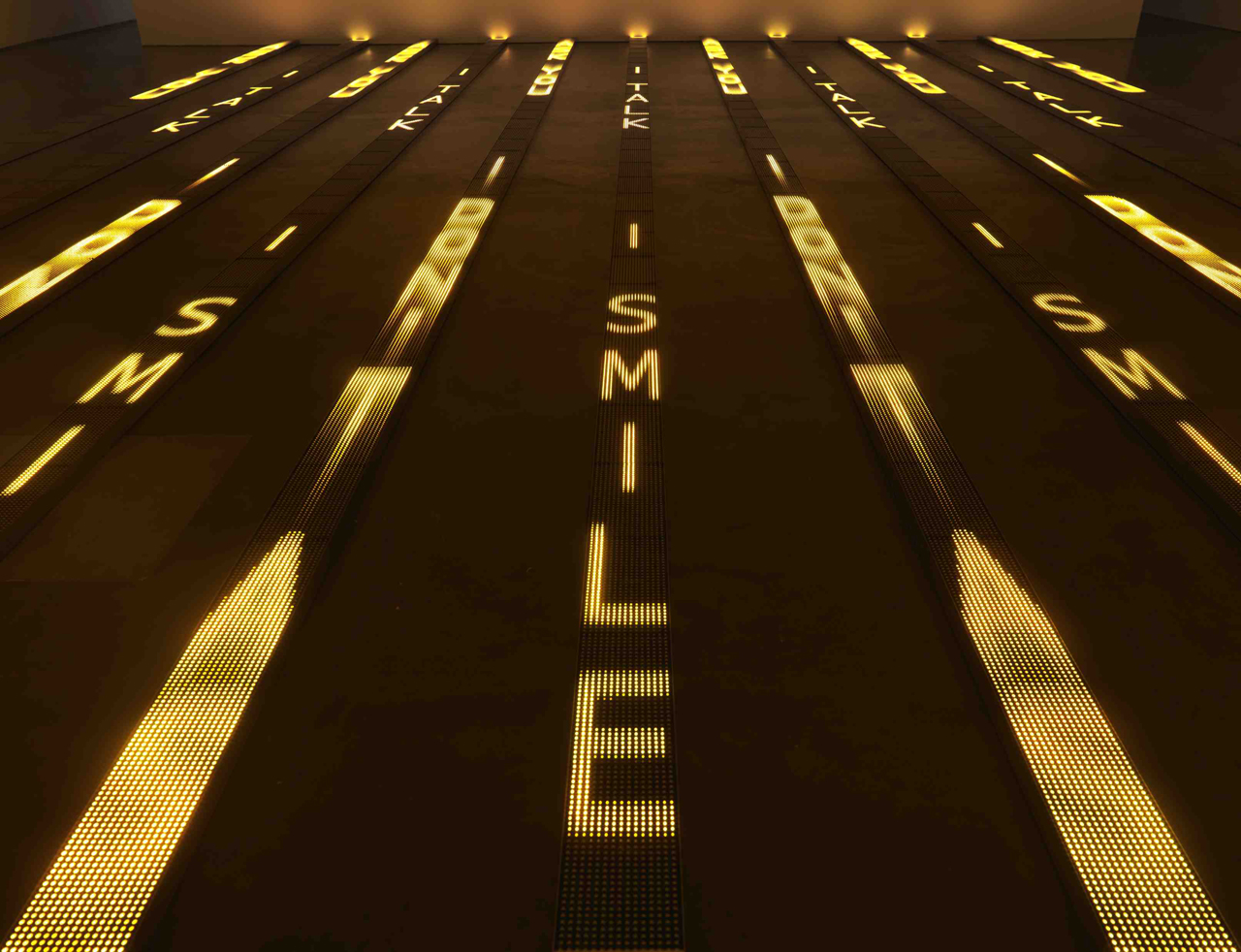
Foundation
Marc Quinn
October 5 → January 6, 2008
Gathering over forty recent works, DHC/ART’s inaugural exhibition by conceptual artist Marc Quinn is the largest ever mounted in North America and the artist’s first solo show in Canada
Content: Skin
What would you say your work is about? “Lots of things... but essentially, it all comes back down to the body and the engagement of the physical self within a space.” [1]
Bharti Kher
Bharti Kher’s practice comprises four distinct but interrelated dimensions: bindi works, hybrids, readymades, and sculptures. At the heart of this ensemble lies the body, and with it comes the skin. For the artist, this skin is not intended to confine the body in a permeable envelope. Rather, it is manifest in a surface layer teeming with bindis, in saris embracing cement pillars or in the plaster imprints of strange and familiar bodies encountering one another.
An absence of assignable cause (2007) is Kher’s sculptural interpretation of a blue whale’s heart. The power and immensity of this organ overwhelm us, as it serves to pump and circulate blood throughout the body of the largest mammal on earth. True to size, the sculpture gives off strength but at the same time, given the heart’s extraction from the body of an animal, fragility and vulnerability. The membrane that surrounds it is ribbed with veins and shaped by multiple clusters of bindis. From the sanskrit word bindu meaning point or drop, the bindi is a dot traditionally applied to the forehead in between the eyebrows to represent the third eye.
A number of works shown in the exhibition incorporated the sari. There are those considered by the artist as portraits, which comprise saris dipped in resin and wrapped around cement pillars. Each one is the approximate weight of the artist and is associated with a women Kher knows. A careful consideration of each draping thus becomes a way to reflect on these women’s different stories. Also exhibited are works such as The night she left (2011) or The day they met (2011), which are composed of twisted saris working their way up or down ready-made staircases, or rolling out in a succession of folds. Associated with the South Asian woman’s body, the sari is a piece of fabric without stitches that is worn draped over the body in multiple ways. For Kher, it can, among other things, evoke the memory of an absent body, adopt a natural or animal movement or explore its various identitary, cultural and political dimensions. The sari also recalls her childhood, when her father worked in textiles and her mother was a dressmaker with her own fabric store.
From 2012 to 2014, Kher created a series of a plaster casts representing sex workers in Kolkata—each one sitting on a stool, nude, eyes closed. From this series emerged the powerful Six Women (2013-2015), which was presented in the exhibition. Most recently, Kher pursued her research on the body and skin with her parents. As she wrote in her journal: “When you caress the skin and rub the plaster gently over and over so that all the pores and creases are etched and filled with plaster, it’s like encasing and mummifying a living being. You are trying to capture their breath, to find the imprint of their minds and thoughts and the secrets of the soul. (...) What the cast carries only the model can give.” [2]
Bharti Kher: Movements was designed by the PHI Foundation Education team to encourage visitors to develop and elaborate on some key concepts of the exhibition Bharti Kher: Points de départ, points qui lient, presented from April 20 to September 9, 2018.
[1] BLOOMBERG (2015). “Bharti Kher”. Brilliant Ideas. Online. https://www.youtube.com/watch?v=ciBfW7ozNg8. Consulted April 3, 2018.
[2] ROSENTHAL, Stéphanie (2016). “A Rhizomatic Invasion.” The Breathing House. Exhibition catalogue (Freud Museum, September 30 to November 20, 2016).] London: Hauser & Wirth Publications, p. 24.
Author: Marie-Hélène Lemaire
Marie-Hélène Lemaire is Head of Education at the PHI Foundation for Contemporary Art. She holds a Ph.D. in Communications Studies at Concordia University that focuses on developing a movement-based pedagogy for guided group visits in contemporary art exhibitions. Using a feminist pedagogy of embodiment, new materialist and poetic inquiry approaches, she aims to privilege and validate sensorial, sensuous and affective engagements with contemporary art. She has published in The Journal of Museum Education (2021), the Canadian Review of Art Education (2021), and Muséologies (2018). She also nurtures a poetic writing practice for developing, facilitating, and interpreting curricula for guided visits, as well as to express her own personal aesthetic engagements. She is committed to epistemic justice in the arts.

Foundation
Gathering over forty recent works, DHC/ART’s inaugural exhibition by conceptual artist Marc Quinn is the largest ever mounted in North America and the artist’s first solo show in Canada

Foundation
Six artists present works that in some way critically re-stage films, media spectacles, popular culture and, in one case, private moments of daily life

Foundation
This poetic and often touching project speaks to us all about our relation to the loved one

Foundation
DHC/ART Foundation for Contemporary Art is pleased to present the North American premiere of Christian Marclay’s Replay, a major exhibition gathering works in video by the internationally acclaimed artist

Foundation
DHC/ART is pleased to present Particles of Reality, the first solo exhibition in Canada of the celebrated Israeli artist Michal Rovner, who divides her time between New York City and a farm in Israel

Foundation
The inaugural DHC Session exhibition, Living Time, brings together selected documentation of renowned Taiwanese-American performance artist Tehching Hsieh’s One Year Performances and the films of young Dutch artist, Guido van der Werve

Foundation
Eija-Liisa Ahtila’s film installations experiment with narrative storytelling, creating extraordinary tales out of ordinary human experiences

Foundation
For more than thirty years, Jenny Holzer’s work has paired text and installation to examine personal and social realities